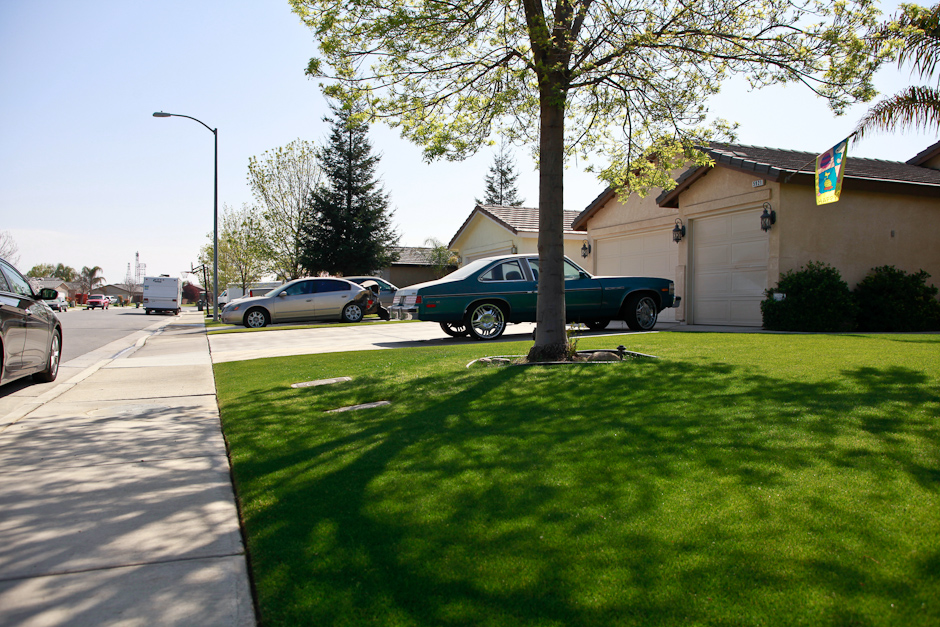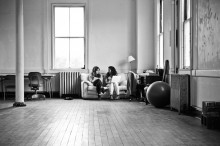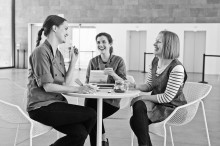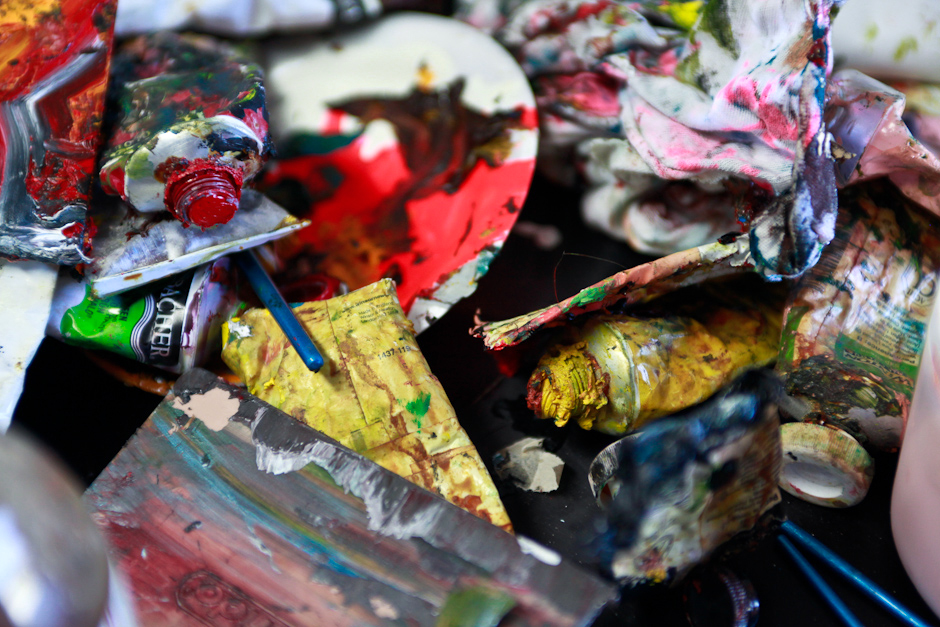
Nano Rubio
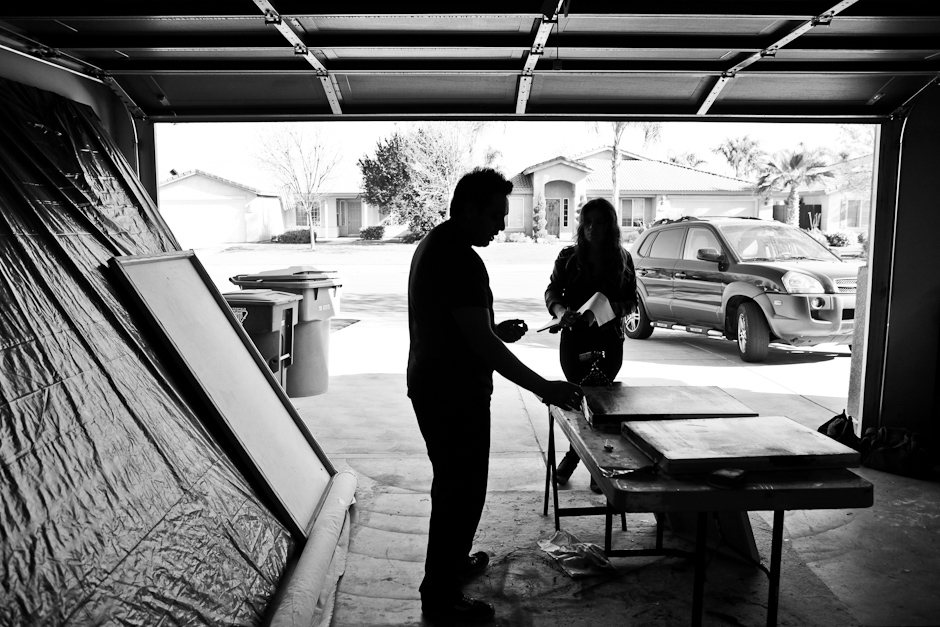
Ellen Key, a Swedish feminist and writer, once said, “The more horrifying this world becomes, the more art becomes abstract.” Initially I balked at this thought, because it seemed so dark, almost gruesome and I didn’t want to have to consider that much of the work I seem to naturally gravitate towards is a reflection of and response to humanity’s often ghastly state of affairs. In general, concerning abstract paintings, I have found that the sense of spontaneity, the rhythm of gestures, the vast fields and swaths of color, have always offered a feeling of optimism; the kind of optimism that comes out of uprisings, breaks with convention, and big voices shouting out new vocabulary. Certainly, I was dismayed to think otherwise, and yet I couldn’t quite brush off Ellen Key’s assertion, and so it got filed away somewhere in my brain where all other challenging bits of information go.
Our visit with Nano has forced me to circle back to Key’s statement. Before seeing Nano’s paintings in person and speaking to him about his work, I had already made assumptions— I thought of his pieces as assertive, showy, and just a bit rebellious in spirit… like a beautiful, sneering teenager. But Nano surprised me when we talked— “My work is mostly inspired by social unrest. Flesh colored paint gestures are a signifier of the current smearing of the human. The fact that most suffering in the world goes unnoticed or unaddressed…” Somehow I had read more bravado and a ragged kind of glam in his work, and less trauma and despondence. Nano discussed humanity’s relationship to technological and industrial developments with a frustrated sadness that caught me off guard, and now in thinking about Key’s words, I’m pushed to confront the idea that abstraction is possibly a way of coping, a way of getting at what might be too big, too heavy, too “real” to handle. And that does make sense to me— sometimes the more abstracted something is the closer it is to the reality, especially the psychological one.
From the get go our visit with Nano has asked me to reassess my expectations. I mean, here he is, making these rebellious, distraught, near nihilistic paintings in the garage of his tract home in Bakersfield, surrounded by manicured lawns, transplanted palm trees, and mini vans. Honestly, Nano is going for it. But if you look further out, passed the squares of the green grass and the empty perfect streets, out across the dusty stretches of California land, you begin to see it, too… and a dark chill settles on your skin… Thousands of pump jacks, standing shoulder to shoulder, extracting oil from the earth, and the flares of natural gas venting from the oil wells glowing against the horizon.
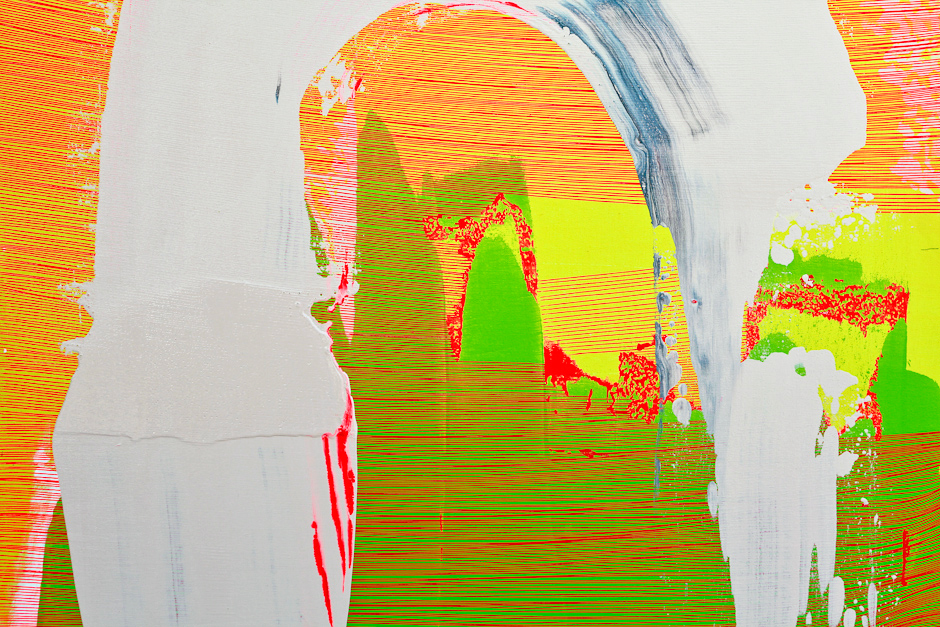
How would you describe your subject matter or the content of your work?
My work shows the human figure as a distortion strewn across landscapes. I think about the relationship between humans and technology/land, and I view them as disconnected.
What mediums do you work with?
I work with acrylic on stretched canvas. I make the stretchers myself, and try to make them the best I can. They have this “handmade” quality to them sometimes. But I like being involved in the process from start to finish.
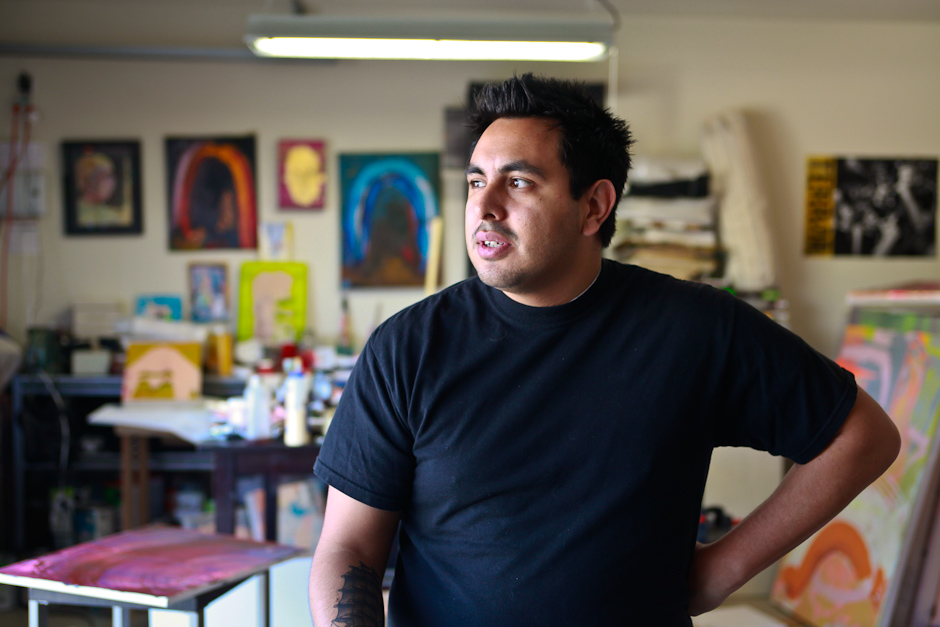
You seem to manipulate paint in very different ways simultaneously— the background of your paintings is often rendered with precision and implies a great deal of labor, whereas the foreground seems more gestural and organic. Can you tell us more about your relationship to these dissonant approaches?
I spend a lot of time on the background which looks fast/digital/printed, but actually takes around 4-8 hours depending on the size of the painting. It’s about laying down a hard earned structure and going in and fucking it up. As for the foreground, I understand these gestures are largely accepted valid marks rooted in an art historical context such as abstract expressionism, however I still feel a great sense of destruction applying them as an action. When I apply the swaths of paint over the line work it changes the gesture. It changes something as organic as a paint stroke, into something corporate like a logo, and they take on this iconic presence. That’s why I try to limit the number of gestures in the work. I reference flesh colors in my paintings so it’s also about reversing power structures where the human takes on the iconic corporate role and the digital space becomes secondary.
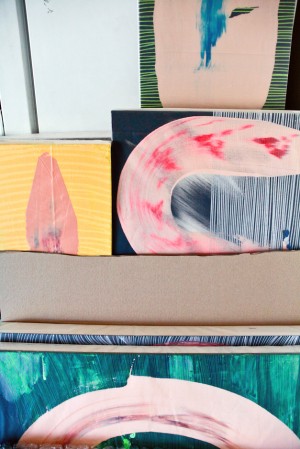

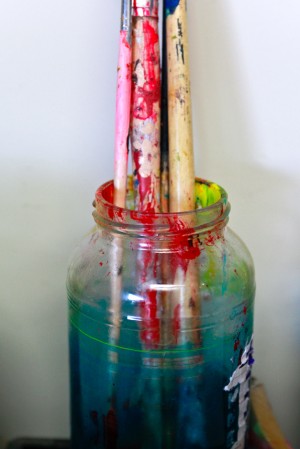
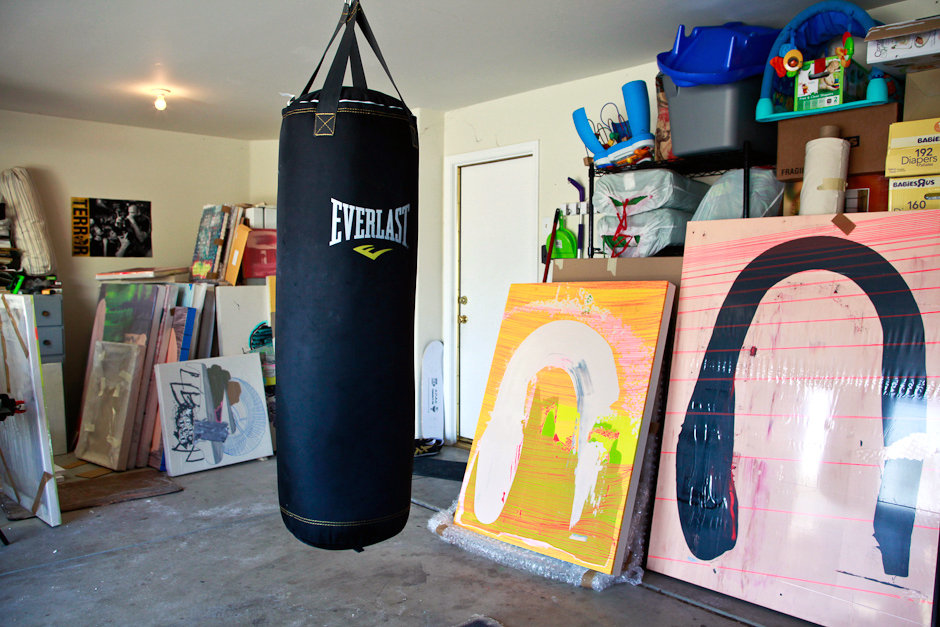
Do you see your work as autobiographical at all? Does personal history work its way into your practice?
I do have a destructive side so family and friends that know me well probably make the connection better than others. I think my art is me through and through. I make paintings/drawings/punching bags/paper cutouts— and all of it points to something about me.
Do you have a day job? What is it? What does it mean to you?
My day job is a college professor. I teach Drawing, Art Appreciation, Digitals Arts and Painting, and it means a lot to me. It’s changing me for sure. When I was in college I was and still am to some degree an introvert, so having daily interactions with people who look to me for answers and being able to guide them is new and I feel lucky every day I go to work.
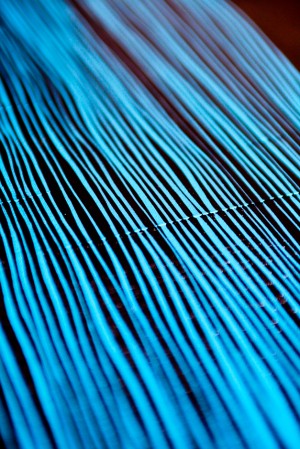
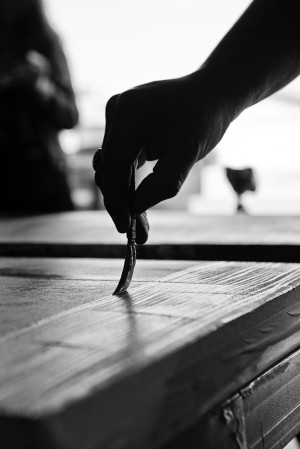
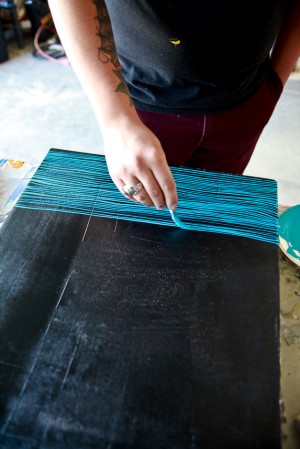
What are you presently inspired by— are there particular things you are reading, listening to or looking at to fuel your work?
My work is mostly inspired by social unrest. Flesh colored paint gestures are a signifier of the current smearing of the human. The fact that most suffering in the world goes unnoticed or unaddressed I believe is caused by a methodically orchestrated mass distraction by means of digital media. Marshall McLuhan predicted this by stating, “As the new electric technologies come into play, people are less and less convinced of the importance of self expression. Team work succeeds private effort. Ours is the first age in which many thousands of the best trained minds have made it a full planned business to get inside the collective public mind.” I believe we are living in a reality where those “best trained minds” have succeeded. We are infiltrated and distracted to exploit the human as well as the environment. This drives my work; I’m ultimately depicting cautionary images. Other inspirations are from a book depicting earth mounds. The book illustrates various mounds across the US. I use this for inspiration—not to copy how a mound may look, but to gain more understanding of the relationship humans once had with the earth. I think about that when I make work. My daily commute is also filled with a variety of landscapes, so I’m looking at agriculture, oil fields, and questioning their sustainability.


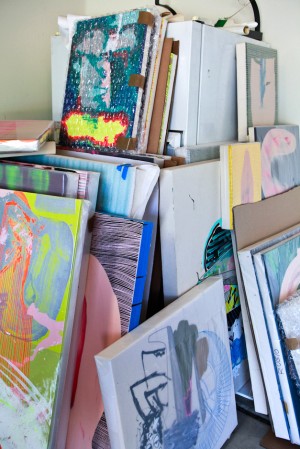

Is there something you are currently working on, or are excited about starting that you can tell us about?
I started working with smoother surfaces which is new, and I’ve started a series relating to the everyday landscape I encounter. The new paintings are more fractured and the landscape is broken. The iconic flesh colors are starting to weave into the landscape. I also brought back a drop-shadow technique I used in older paintings where flesh colored gestures are depicted as having a shadow enhancing the illusion of separation between background and foreground in some areas of the paintings. These new moves are a challenge but I enjoy pushing the work.
How do you navigate the art world?
I’ve had some great people support my work and I’m grateful for that, but overall I just try to focus on making good work as often as I can. That’s the hard part.
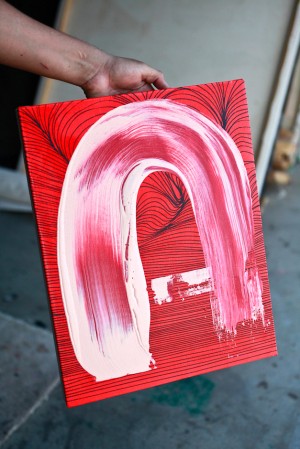


Do you see your work as relating to any current movement or direction in visual art or culture? Which other artists might your work be in conversation with?
Concerned painting? Is that a genre? The post-painting approach to contemporary object making? I’d like to think my work is radical, but like I said before they are “accepted mark making paintings” and they don’t bring about “a call to action” in the way I would like. Although I think the work is still uncomfortable for some and that’s a good thing. I think my work is in visual conversation with Gerhard Richter’s work. Mathew Zefeldt has similar separations in his work, which are amazing, and Justin Bowers is similarly hinting at the relationship between humans and digital space.
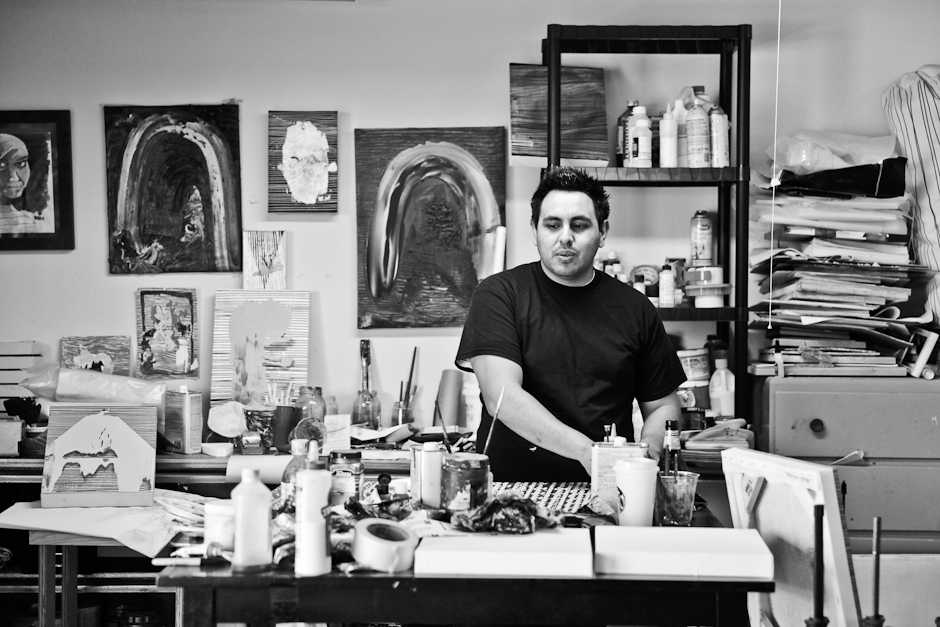
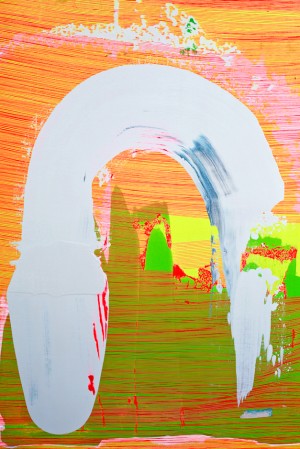
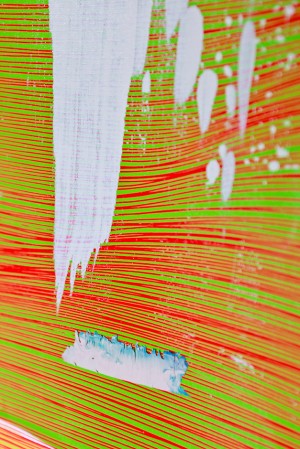
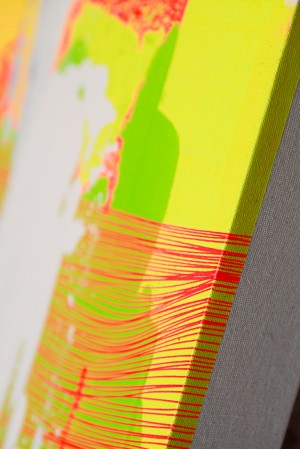
Do you have a motto?
Always the hard way.
Are you involved in any upcoming shows or events? Where and when?
I currently have a show called III Many, exhibiting artists from Nevada and LA. Curated by founder Shannon McMackin, the show will be at Vast Space Projects in Nevada.
I am also in an upcoming group show called MAS ATTACK 3— the opening reception is on August 9th from 6pm-10pm at the Torrance Art Museum. Organized by ARTRA Curatorial.
To see more of Nano’s work:
www.nanorubio.com

